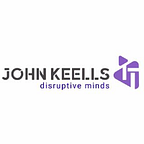Remodeling your supply chain for the NEW NORMAL
With the advent of the delta variant of the SARS-CoV-2 virus, supply chains across the world from semiconductor chips to food supplies are being disrupted. Due to issues such as ports being closed due to Covid-19 outbreaks (eg. Ningbo-Zhoushan port in Southern China) to reluctance of workers to return to manufacturing plants given the speed of spread of the newer Covid-19 variants, there are various factors at play providing supply chain pressures. According to certain experts, the ripple effects of the Covid waves will be felt throughout the global supply chain until at least late 2023. As such, the need for a leaner more optimized supply chain is ever more apparent for organizations. The use of Analytics and AI can help your company achieve this objective.
One important measure of an organization is it’s estimated available inventory along its value chain. The more accurate to the ground truth this figure is the better equipped an organization will be to keep production running and enable delivery to customers. In order, to do this sometimes requires information from multiple siloed IT systems to be integrated to a single source of truth such as a data warehouse or data lake where this data can be analyzed and modelled for various scenarios. Various advanced analytics techniques such as Bayesian Modelling (which was used in the case of optimizing supply chains at Space X) can then be used to model optimal scenarios for organizations under simulated demand across multiple holding costs and anticipated yield values for examples, allowing planners to make data driven decisions.
While the demand can be simulated, it is also important to assess realistic final-customer demand and where it is possible, respond to shortage-buying behavior of customers as soon as possible. We at John Keells IT, have developed an advanced analytics-based dashboard model for the retail segment which can be used to forecast and anticipate demand across multiple SKUs. Demand can be forecasted at a daily granular level across outlets and provides detailed information on temporal purchasing patterns as well.
With the use of Analytics and AI supply chain shocks can be mitigated to a great deal and will also help with cash management and net working capital issues especially given the volatile post Covid-19 dynamics regarding consumer behavior and logistics difficulties.
by Nuzhi Meyen
